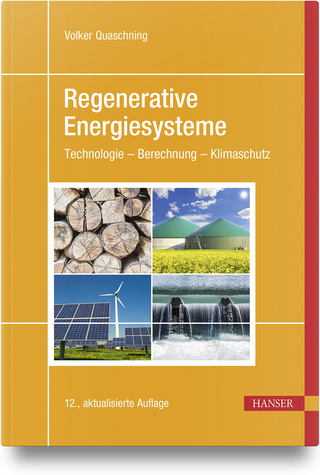
Underwater Acoustic Modeling and Simulation, Fourth Edition
Crc Press Inc (Verlag)
978-1-4665-6493-0 (ISBN)
- Titel erscheint in neuer Auflage
- Artikel merken
New to the Fourth Edition
Extensive new material that addresses recent advances in inverse techniques and marine-mammal protection
Problem sets in each chapter
Updated and expanded inventories of available models
Designed for readers with an understanding of underwater acoustics but who are unfamiliar with the various aspects of modeling, the book includes sufficient mathematical derivations to demonstrate model formulations and provides guidelines for selecting and using the models. Examples of each type of model illustrate model formulations, model assumptions, and algorithm efficiency. Simulation case studies are also included to demonstrate practical applications.
Providing a thorough source of information on modeling resources, this book examines the translation of our physical understanding of sound in the sea into mathematical models that simulate acoustic propagation, noise, and reverberation in the ocean. The text shows how these models are used to predict and diagnose the performance of complex sonar systems operating in the undersea environment.
Paul C. Etter has worked in ocean-atmosphere physics and environmental acoustics for the past 40 years, including as an active duty ASW officer for the U.S. Navy. He is the author and coauthor of more than 200 technical reports, professional papers, and books addressing environmental measurement technology, underwater acoustics, and physical oceanography. He received his B.S. in physics and his M.S. in oceanography from Texas A&M University.
Introduction
Background
Measurements and Prediction
Developments in Modeling
Advances in Simulation
Operational Challenges
Inverse Acoustic Sensing of the Oceans
Standard Definitions
Acoustical Oceanography
Background
Physical and Chemical Properties
Sound Speed
Boundaries
Dynamic Features
Biologics
Propagation I: Observations and Physical Models
Background
Nature of Measurements
Basic Concepts
Sea-Surface Boundary
Sea-Floor Boundary
Attenuation and Absorption in Sea Water
Surface Ducts
Deep Sound Channel
Convergence Zones
Reliable Acoustic Path
Shallow-Water Ducts
Arctic Half-Channel
Coherence
Propagation II: Mathematical Models (Part One)
Background
Theoretical Basis for Propagation Modeling
Ray-Theory Models
Normal-Mode Models
Multipath Expansion Models
Fast-Field Models
Parabolic Equation Models
The RAYMODE Model: A Specific Example
Numerical Model Summaries
Propagation II: Mathematical Models (Part Two)
Background
Surface Duct Models
Shallow-Water Duct Models
Arctic Models
Data Support Requirements
Special Applications and Inverse Techniques
Background
Stochastic Modeling
Broadband Modeling
Matched Field Processing
Transmutation Approaches
Nonlinear Acoustics and Chaos
Three-Dimensional Modeling
Ocean Fronts, Eddies, and Internal Waves
Coupled Ocean-Acoustic Modeling
Acoustic Tomography
Phase Conjugation and Time-Reversal Mirrors
Deductive Geoacoustic Inversion
Prediction Uncertainties in Complex Environments
Rapid Environmental Assessments
Underwater Acoustic Networks and Vehicles
Marine-Mammal Protection
Through-the-Sensor Parameter Estimation
Seismo-Acoustic Inversion
Noise I: Observations and Physical Models
Background
Noise Sources and Spectra
Depth Dependence
Directionality
Surf Noise
Arctic Ambient Noise
Acoustic Daylight
Geoacoustic Inversion
Acoustic Rain Gauges
Noise II: Mathematical Models
Background
Theoretical Basis for Noise Modeling
Ambient-Noise Models
The RANDI Model: A Specific Example
The Noise Notch
Beam-Noise Statistics Models
Data Support Requirements
Numerical Model Summaries
Reverberation I: Observations and Physical Models
Background
Volume Reverberation
Boundary Reverberation
Inversion Techniques
Reverberation II: Mathematical Models
Background
Theoretical Basis for Reverberation Modeling
Cell-Scattering Models
The REVMOD Model: A Specific Example
Bistatic Reverberation
Point-Scattering Models
Numerical Model Summaries
Sonar Performance Models
Background
Sonar Equations
The NISSM Model: A Specific Example
Model Operating Systems
Advanced Signal Processing Issues
Data Sources and Availability
Numerical Model Summaries
Model Evaluation
Background
Past Evaluation Efforts
Analytical Benchmark Solutions
Quantitative Accuracy Assessments
The POSSM Experience: A Specific Example
Evaluation Guidelines
Documentation Standards
Simulation
Background
Hierarchical Levels
Simulation Infrastructure
High-Level Architecture
Testbeds
Applications
References
Appendix A: Abbreviations and Acronyms
Appendix B: Glossary of Terms
Appendix C: Web Sites
Appendix D: Problem Sets
Index
| Zusatzinfo | N/A; Over 100; 25 Tables, black and white; 156 Illustrations, black and white |
|---|---|
| Verlagsort | Bosa Roca |
| Sprache | englisch |
| Maße | 152 x 229 mm |
| Gewicht | 907 g |
| Themenwelt | Technik ► Elektrotechnik / Energietechnik |
| Technik ► Maschinenbau | |
| Technik ► Nachrichtentechnik | |
| ISBN-10 | 1-4665-6493-8 / 1466564938 |
| ISBN-13 | 978-1-4665-6493-0 / 9781466564930 |
| Zustand | Neuware |
| Informationen gemäß Produktsicherheitsverordnung (GPSR) | |
| Haben Sie eine Frage zum Produkt? |
aus dem Bereich



